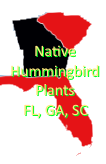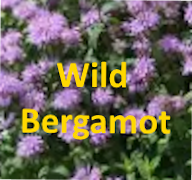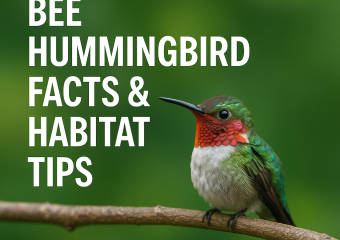Native Plants Guide: Must-Have Picks for Hummingbirds
Native Plants for Hummingbird Gardens in Georgia, Florida, and South Carolina
Creating a garden that attracts and supports hummingbirds can be a delightful way to enjoy wildlife while contributing to biodiversity. Residents of Georgia, Florida, and South Carolina share a climatic range that supports a variety of native plants capable of producing abundant nectar. Here are ten native plants that are found in all three states and are excellent for attracting hummingbirds. Additionally, you’ll find practical advice on how many of each plant you might need to support a charm of six hummingbirds, along with a brief description of each plant.
Optimal Plant Selections for Hummingbird Nectar
1. Trumpet Creeper (Campsis radicans)
This vigorous vine is known for its stunning, trumpet-shaped orange flowers which are magnets for hummingbirds. Plant 2-3 vines in a sunny spot and provide a structure to climb on, such as a trellis or fence.
2. Coral Honeysuckle (Lonicera sempervirens)
Unlike its invasive cousin, Japanese honeysuckle, coral honeysuckle is a native species that offers red or coral tubular flowers. Two plants should suffice in a small garden, offering both visual appeal and nectar.
3. Bee Balm (Monarda didyma)
Known for its unique, spiky appearance and vibrant red color, bee balm is a favorite among hummingbirds. Planting 3-4 of these in your garden can create striking visual interest and plenty of feeding spots for hummingbirds.
4. Red Buckeye (Aesculus pavia)
This shrub or small tree produces handsome red flowers in spring. Due to its larger size, one or two buckeyes can be enough for a small garden.
5. Firebush (Hamelia patens)
Adorning itself with clusters of orange to red flowers, firebush not only attracts hummingbirds but also butterflies. Two plants will thrive well in a sunny to partly shaded area.
6. Wild Bergamot (Monarda fistulosa)
Featuring lavender flowers and a minty scent, wild bergamot is a herbaceous perennial that is drought tolerant once established. Three to four plants would be ideal in a small garden.
7. Cardinal Flower (Lobelia cardinalis)
The brilliant red flowers of the cardinal flower stand out in any garden, and they are highly attractive to hummingbirds. Plant about three of these for maximum impact and nectar production.
8. Purple Coneflower (Echinacea purpurea)
While more commonly associated with attracting butterflies, the purple coneflower’s nectar and seeds also draw in hummingbirds and other birds. Four to five plants can populate a garden nicely.
9. Salvia (Salvia spp.)
Various Salvias, including scarlet sage (Salvia coccinea), are excellent for hummingbirds. Plant a group of 3-5 for continuous blooms.
10. Crossvine (Bignonia capreolata)
With its charming trumpet-shaped flowers in shades of yellow and orange, crossvine is a vigorous climber that provides a high volume of nectar. Two plants will be sufficient in a small to medium garden.
Planting Recommendations
To support a charm of six hummingbirds, aim for a diverse mix, planting three to five of each species mentioned if space allows. Hummingbirds enjoy a continuous supply of food, and a varied planting ensures a longer blooming season.
Learn More About Native Plants
For those interested in further exploring native plants suitable for Georgia, Florida, and South Carolina, consider the following resources:
Each website offers valuable resources for selecting native plants tailored to your local ecosystem, ensuring your hummingbird garden is not only beautiful but also sustainable. With careful plant selection and consideration of flowering times, you can create a haven for hummingbirds that enriches your environment and provides endless enjoyment watching these fascinating birds.






